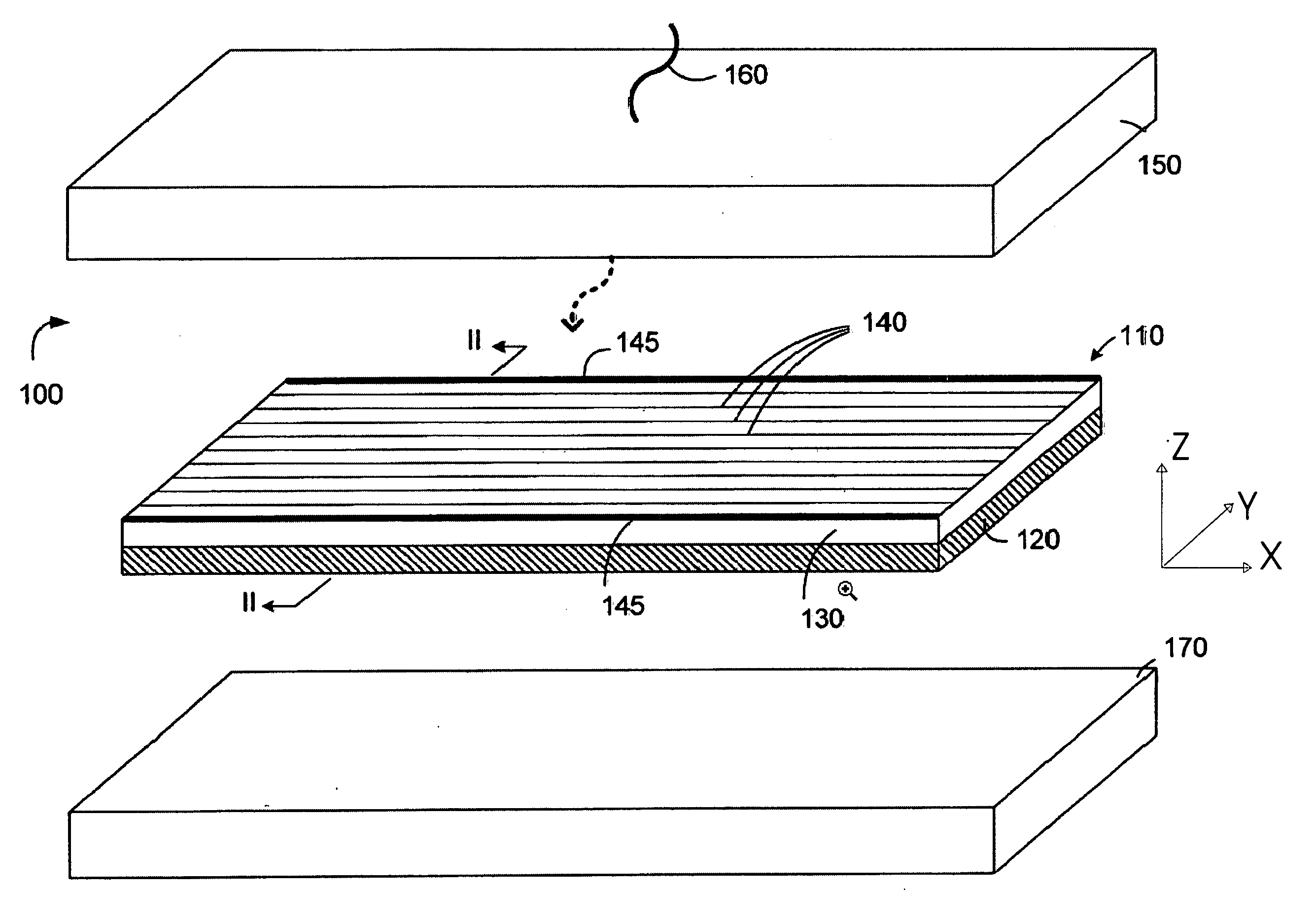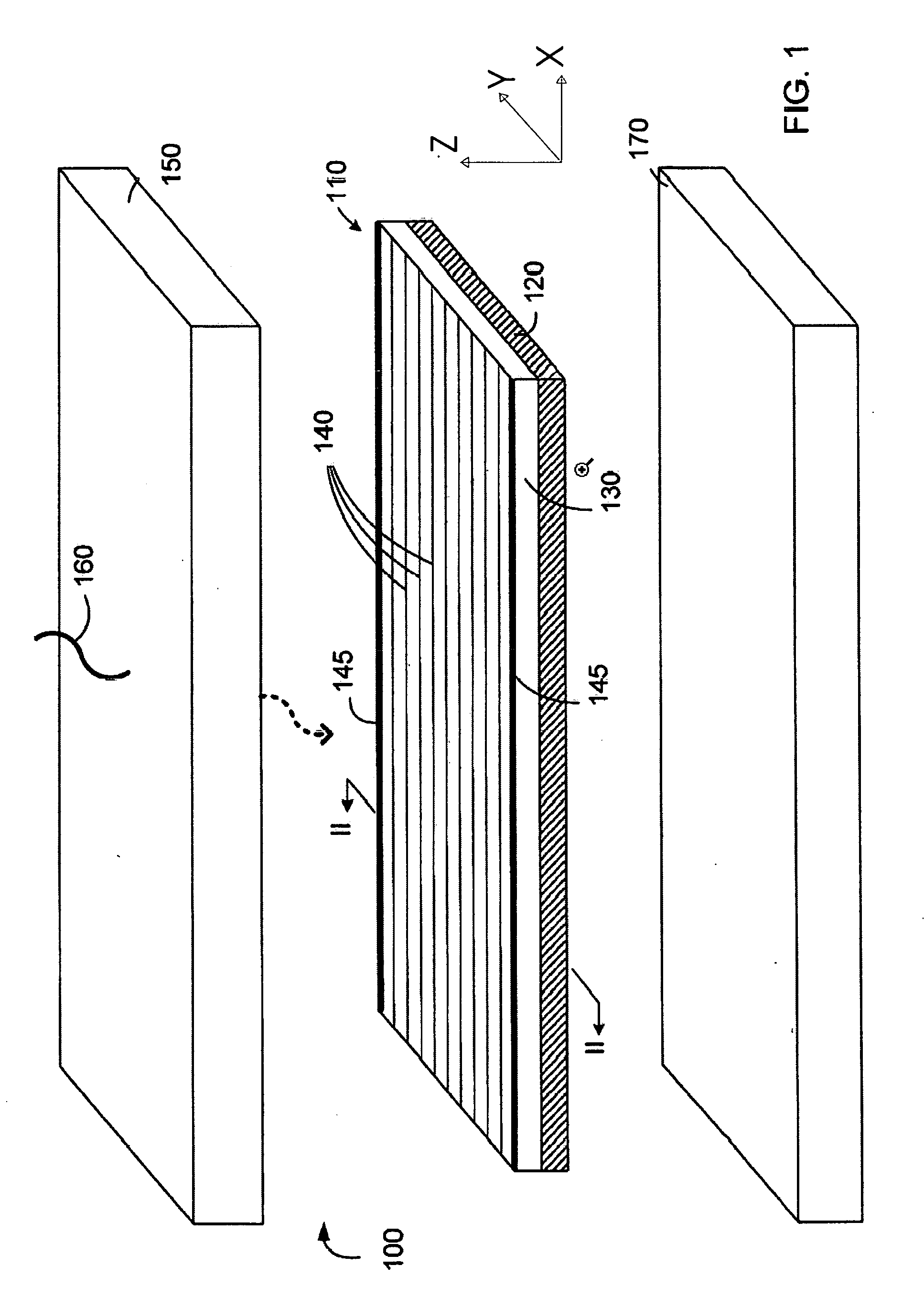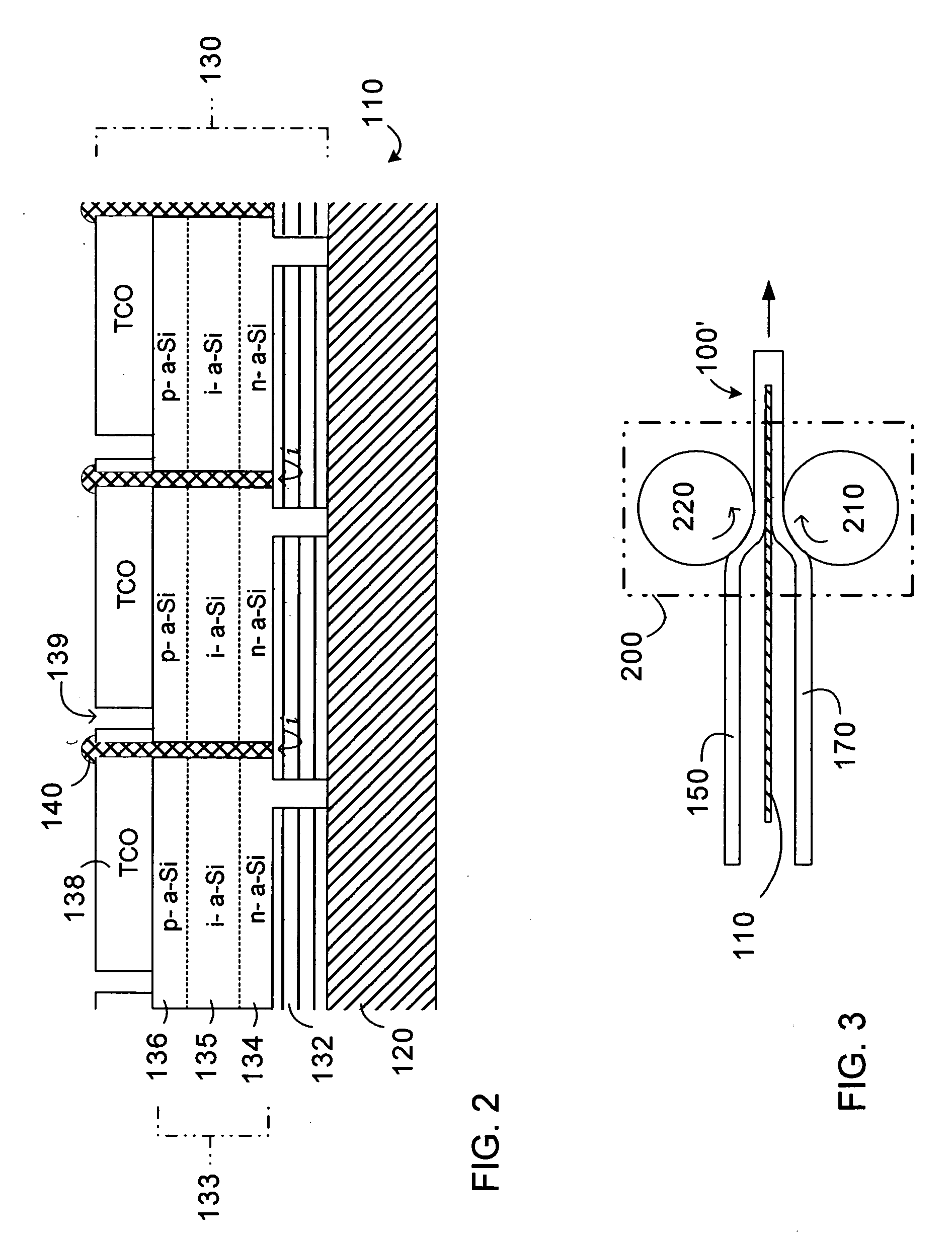Electric energy generating modules with a two-dimensional profile and method of fabricating the same
a technology of electric energy generating modules and profiles, applied in photovoltaic energy generation, sustainable buildings, photovoltaic energy generation, etc., can solve the problems of reducing the efficiency of the connection process, requiring expensive press equipment, and affecting the aesthetics of the building or other structure, so as to reduce the efficiency loss of the shade of the profiled parts of the module on the other parts of the modul
- Summary
- Abstract
- Description
- Claims
- Application Information
AI Technical Summary
Benefits of technology
Problems solved by technology
Method used
Image
Examples
Embodiment Construction
[0026] In accordance with a preferred embodiment of the present invention, FIG. 1 is an exploded view showing the different films (i.e., layers) within a PV module 100, prior to the module undergoing a bonding step. While the present invention can also be applied to other types of electrical energy generating films and modules, it is particularly suited to the PV field, and as a result PV applications are referred to herein. This is in no way intended to limit the scope of the present invention to other suitable types of electrical energy generating films and modules such as, for example, a hybrid thermophotovoltaic (TPV) film.
[0027] As shown in FIG. 1, PV module 100 is formed from a thin flexible PV film 110, a sheet of a top encapsulant material 150, and a sheet of a bottom encapsulant material 170. Although shown as flat (i.e., with a one-dimensional profile when viewed from the side), it will be appreciated that flexible PV film 110 is capable of adopting various 2-D profiles i...
PUM
 Login to View More
Login to View More Abstract
Description
Claims
Application Information
 Login to View More
Login to View More - R&D
- Intellectual Property
- Life Sciences
- Materials
- Tech Scout
- Unparalleled Data Quality
- Higher Quality Content
- 60% Fewer Hallucinations
Browse by: Latest US Patents, China's latest patents, Technical Efficacy Thesaurus, Application Domain, Technology Topic, Popular Technical Reports.
© 2025 PatSnap. All rights reserved.Legal|Privacy policy|Modern Slavery Act Transparency Statement|Sitemap|About US| Contact US: help@patsnap.com



